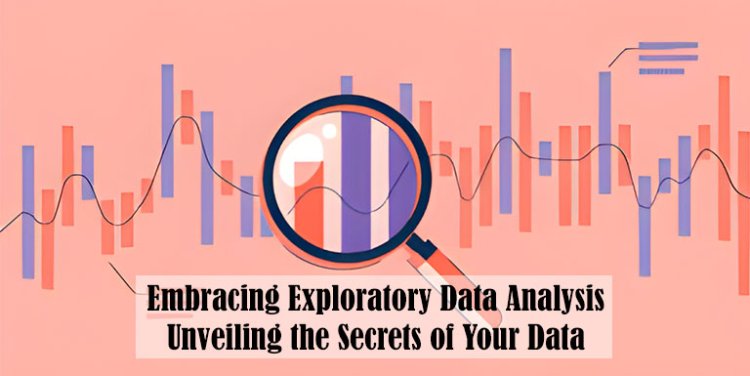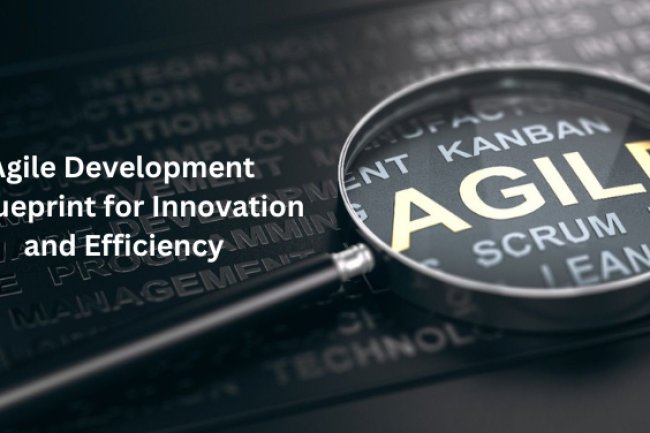Embracing Exploratory Data Analysis: Unveiling the Secrets of Your Data

Data is often referred to as the new oil of the 21st century, and it's not hard to see why. In our increasingly data-driven world, the ability to extract meaningful insights from vast amounts of information is invaluable. Exploratory Data Analysis (EDA) is a crucial step in the data analysis process, allowing data scientists and analysts to uncover hidden patterns, outliers, and trends within their data. In this blog, we will explore the importance of EDA, its key components, and how it can empower you to make informed decisions and drive your projects to success.
What is Exploratory Data Analysis (EDA)?
Exploratory Data Analysis is the process of visually and statistically summarizing data to discover its underlying structure and gain a deeper understanding of the information it contains. EDA involves a combination of data visualization techniques, descriptive statistics, and domain knowledge to reveal insights, patterns, and anomalies in the data.
The Importance of EDA
-
Data Understanding: EDA is the first step in understanding your dataset. It helps you become familiar with the data's characteristics, such as the data types, distributions, and potential issues.
-
Data Cleaning: EDA often reveals missing values, outliers, or inconsistent data. Identifying and addressing these issues is crucial for subsequent analysis.
-
Feature Selection: EDA can guide feature selection by highlighting which variables are most relevant to the problem at hand and which can be safely disregarded.
-
Hypothesis Generation: EDA can help generate hypotheses and insights that drive further, more targeted analysis. It's the stepping stone to more complex modeling and testing.
Key Components of EDA
-
Data Summarization: Start by obtaining an overview of the dataset. This includes basic statistics like mean, median, mode, standard deviation, and quartiles. Visualization tools like histograms, box plots, and summary tables can be incredibly useful.
-
Data Visualization: Visualization is a powerful tool for EDA. Scatter plots, bar charts, line plots, and heatmaps can provide a visual representation of data relationships, distributions, and anomalies. Tools like Python's Matplotlib and Seaborn, and R's ggplot2, are great resources for data visualization.
-
Handling Missing Data: Identify and deal with missing data points. You can either remove, impute, or make data-driven decisions about missing values.
-
Outlier Detection: Discover outliers in the data. Outliers can greatly affect the results of statistical analysis and modeling, so understanding and addressing them is essential.
-
Correlation Analysis: Explore how variables are related to each other. Correlation matrices and scatter plots can help in understanding the relationships between features.
-
Dimensionality Reduction: Reduce the dimensionality of the data if necessary. Techniques like Principal Component Analysis (PCA) can help simplify complex datasets.
-
Pattern Recognition: Look for trends, clusters, or patterns within the data using techniques such as clustering, dimensionality reduction, and time-series analysis.
Benefits of EDA
-
Better Decision-Making: EDA enables data-driven decision-making, helping you make informed choices in business, research, or any area involving data analysis.
-
Early Issue Detection: Identifying data quality problems and issues at an early stage can save significant time and resources downstream.
-
Improved Model Performance: By understanding your data thoroughly, you can build better predictive models with improved accuracy and generalizability.
-
Enhanced Communication: EDA can help in conveying insights to non-technical stakeholders through compelling visualizations and clear summaries.
Exploratory Data Analysis is not just a preliminary step in data analysis but a powerful tool for uncovering valuable insights and patterns. It is a process that enables you to grasp the essence of your data, leading to better-informed decisions and more successful projects. Embrace EDA as a fundamental component of your data analysis journey, and you'll be well on your way to extracting the hidden treasures within your data, whether you're a data scientist, analyst, or a decision-maker
What's Your Reaction?















